COPB2 promotes hepatocellular carcinoma progression through regulation of YAP1 nuclear translocation
- PMID: 40191726
- PMCID: PMC11964868
- DOI: 10.32604/or.2025.058085
COPB2 promotes hepatocellular carcinoma progression through regulation of YAP1 nuclear translocation
Abstract
Objectives: Although Yes-associated protein 1 (YAP1) is an important oncogene in hepatocellular carcinoma (HCC) progression, its nuclear localization prevents it from being considered a potential therapeutic target. Recently, studies have reported that coatomer protein complex subunit beta 2 (COPB2) also plays a critical role in HCC development; however its mechanism of action is unclear. This study aimed to investigate the role of COPB2 and YAP1 in the progression of HCC and to elucidate the underlying mechanisms.
Methods: COPB2 and YAP1 expression in HCC tissues were first analyzed by database searches and immunohistochemistry. Nomogram and artificial neural network models were established based on COPB2 and YAP1 expression. Cell proliferation was detected by cell counting kit-8 and clone formation assay, while cell migration and invasion were assessed using Transwell assays. Finally, the potential mechanisms underlying COPB2 regulation of YAP1 nuclear translocation were explored by immunofluorescence assay and Western blot.
Results: COPB2 combined with YAP1 expression was associated with overall postoperative survival in HCC patients and was an independent prognostic factor. High expression of both COPB2 and YAP1 in patients may reduce the efficacy of postoperative transarterial chemoembolization therapy. In vitro experiments revealed that COPB2 affected the sensitivity of HCC cells to Cisplatin (DDP) by regulating YAP1 nuclear translocation.
Conclusions: Our findings suggest that COPB2/YAP1 affects the drug sensitivity of HCC cells to DDP and that targeting COPB2/YAP1 may be a promising strategy for the precision treatment of HCC.
Keywords: Cisplatin (DDP); Coatomer protein complex subunit beta 2 (COPB2); Hepatocellular carcinoma (HCC) prognosis; Yes-associated protein 1 (YAP1).
© 2025 The Authors.
Conflict of interest statement
The authors declare no conflicts of interest to report regarding the present study.
Figures


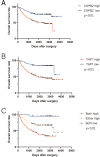
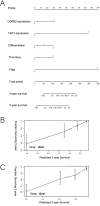
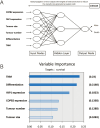

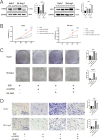

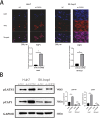
Similar articles
-
SIX4 promotes hepatocellular carcinoma metastasis through upregulating YAP1 and c-MET.Oncogene. 2020 Dec;39(50):7279-7295. doi: 10.1038/s41388-020-01500-y. Epub 2020 Oct 12. Oncogene. 2020. PMID: 33046796
-
PPP1CA promotes hepatocellular carcinoma progression in a YAP1-dependent way.Cell Signal. 2025 Oct;134:111938. doi: 10.1016/j.cellsig.2025.111938. Epub 2025 Jun 11. Cell Signal. 2025. PMID: 40513845
-
COPB2 promotes cell proliferation and tumorigenesis through up-regulating YAP1 expression in lung adenocarcinoma cells.Biomed Pharmacother. 2018 Jul;103:373-380. doi: 10.1016/j.biopha.2018.04.006. Epub 2018 Apr 24. Biomed Pharmacother. 2018. PMID: 29674272
-
miR-199a-3p inhibits cell proliferation and induces apoptosis by targeting YAP1, suppressing Jagged1-Notch signaling in human hepatocellular carcinoma.J Biomed Sci. 2016 Nov 10;23(1):79. doi: 10.1186/s12929-016-0295-7. J Biomed Sci. 2016. PMID: 27832779 Free PMC article.
-
Targeting the Hippo/YAP1 signaling pathway in hepatocellular carcinoma: From mechanisms to therapeutic drugs (Review).Int J Oncol. 2024 Sep;65(3):88. doi: 10.3892/ijo.2024.5676. Epub 2024 Aug 2. Int J Oncol. 2024. PMID: 39092548 Free PMC article. Review.
References
-
- Sung H, Ferlay J, Siegel RL, Laversanne M, Soerjomataram I, Jemal A, et al. . Global Cancer Statistics 2020: GLOBOCAN estimates of incidence and mortality worldwide for 36 cancers in 185 countries. CA Cancer J Clin. 2021;71(3):209–49; - PubMed
-
- Hasegawa K, Kokudo N, Makuuchi M, Izumi N, Ichida T, Kudo M, et al. . Comparison of resection and ablation for hepatocellular carcinoma: a cohort study based on a Japanese nationwide survey. J Hepatol. 2013;58(4):724–9; - PubMed
-
- Sieghart W, Hucke F, Peck-Radosavljevic M. Transarterial chemoembolization: modalities, indication, and patient selection. J Hepatol. 2015;62:1187–95; - PubMed
MeSH terms
Substances
LinkOut - more resources
Full Text Sources
Medical
Research Materials
